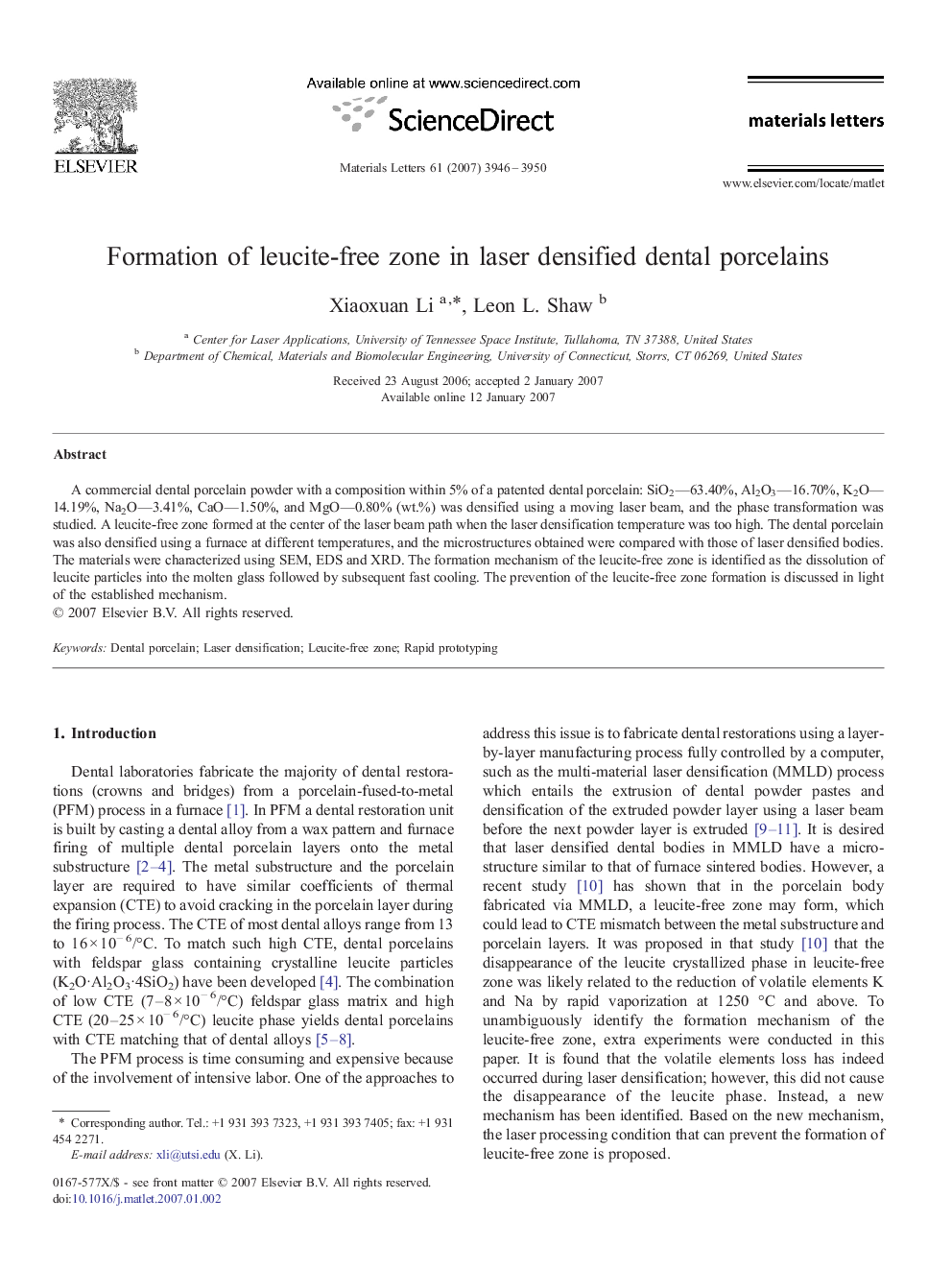| Article ID | Journal | Published Year | Pages | File Type |
|---|---|---|---|---|
| 1652658 | Materials Letters | 2007 | 5 Pages |
A commercial dental porcelain powder with a composition within 5% of a patented dental porcelain: SiO2—63.40%, Al2O3—16.70%, K2O—14.19%, Na2O—3.41%, CaO—1.50%, and MgO—0.80% (wt.%) was densified using a moving laser beam, and the phase transformation was studied. A leucite-free zone formed at the center of the laser beam path when the laser densification temperature was too high. The dental porcelain was also densified using a furnace at different temperatures, and the microstructures obtained were compared with those of laser densified bodies. The materials were characterized using SEM, EDS and XRD. The formation mechanism of the leucite-free zone is identified as the dissolution of leucite particles into the molten glass followed by subsequent fast cooling. The prevention of the leucite-free zone formation is discussed in light of the established mechanism.
